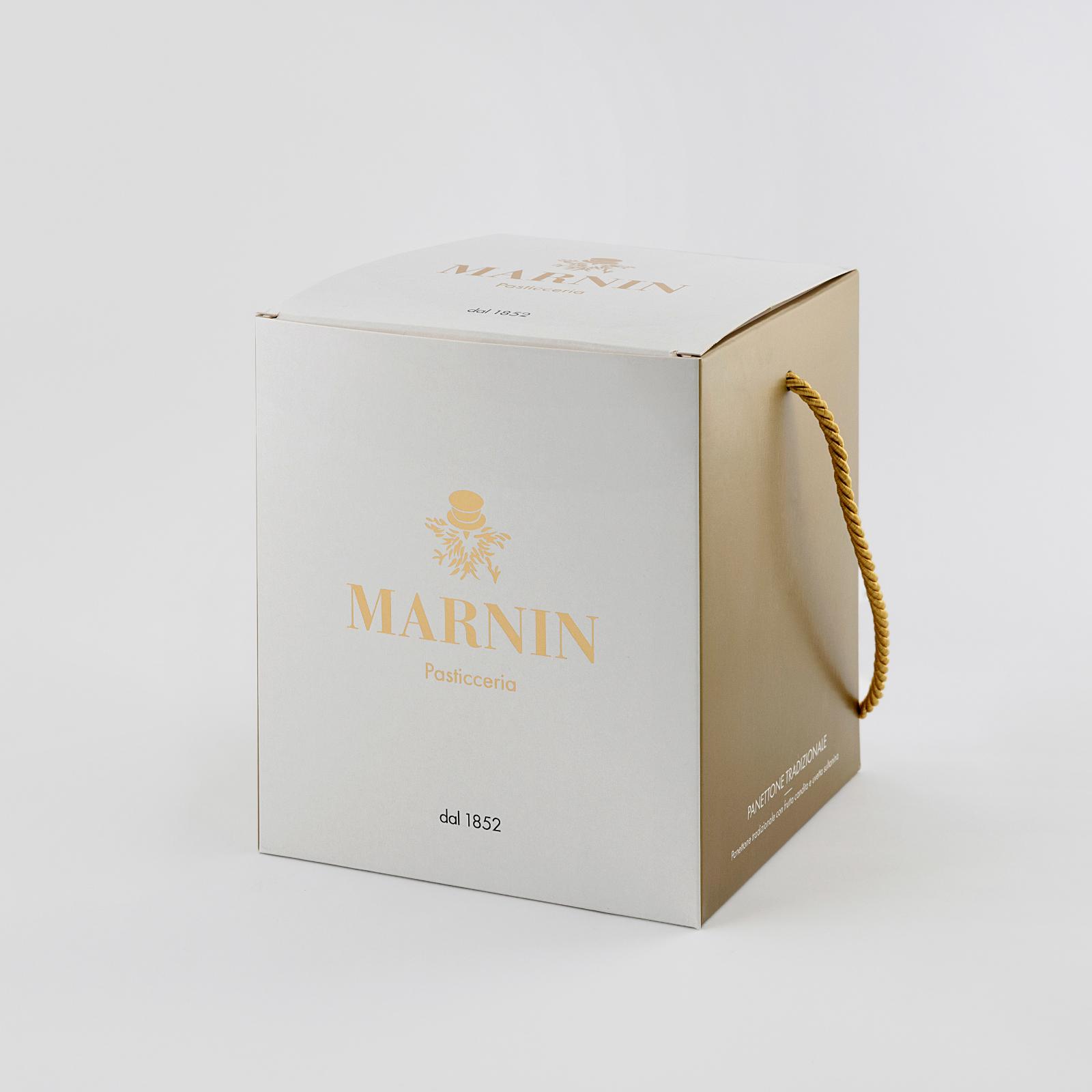Panettone Tradizionale
Soft and delicate, the classic panettone is the most renowned dessert of the Marnin production. Made in an artisan way, with highly selected raw materials, the dough is leavened and allowed to rise for 36 hours. It contains fine sultanas, oranges and candied citron, as required by the classic recipe, to which honey from Ticino is added.
The leavened products of Marnin are fresh products. They should be consumed as soon as possible as they do not contain preservatives. Avoid sudden temperature changes. To be stored in a cool and dry place, away from heat sources and protected from light. Being rich in butter, they should be consumed at a temperature between 20 and 25 degrees Celsius. Shelf life information
- Our products are freshly made, and immediate availability is not guaranteed. Delivery times may vary depending on production, from 2 to 5 working days.
- Our products are free from preservatives. For this reason, you can select your preferred delivery week at checkout to receive them at the perfect time for consumption or as a gift. Shelf life information
- People with allergies or intolerances are advised to consult the information below and always refer to the ingredient list on the product packaging.
- Currently, products are shipped only within Switzerland; for international deliveries, please contact us.
- Shipping costs are calculated at checkout (CHF 15.50 per parcel up to 2 kg, CHF 17.50 per parcel over 2 kg).
- Payment via TWINT, Mastercard and VISA.
- Prices are shown in CHF, VAT included.
Ingredients
Wheat flour, butter, sugar, egg yolk (free-range), sourdough (natural yeasts, water, wheat flour), candied orange peels (orange peels, sugar, glucose-fructose syrup, citric acid (E330)), candied citron (citron peels, glucose-fructose syrup, sucrose, concentrated lemon juice), raisins, acacia honey, inverted sugar syrup, glucose (glucose syrup), cocoa butter, iodized salt, orange and lemon fruit paste (glucose-fructose syrup, orange peels, lemon peels, sucrose, concentrated lemon juice, natural flavors, preservative: sulfur dioxide), vanilla, pineapple syrup (pineapple, sucrose), royal pistachio (pistachio, glucose syrup, almonds, flavors, plant extracts), may contain traces of: peanuts.
Nutritional values per 100 g
Energy 1,124.47 kJ (268.7 kcal)
Fats 19.41 g
– of which saturated fats 9.07 g
Carbohydrates 46.78 g
– of which sugars 0.08 g
Proteins 8.04 g
Salt 0 g
Product shelf life
Our products are handmade and contain no added preservatives. The indicated shelf life refers to the maximum recommended consumption period, calculated from the production date.




